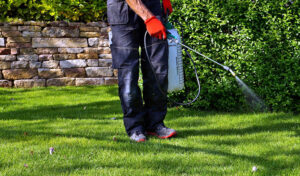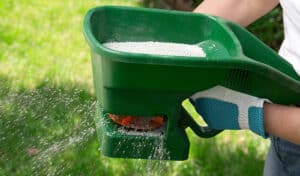Have you ever wondered why wasps seem to be so abundant in the Beehive State? Well, you’re not alone.
When you think of Utah, picturesque landscapes, stunning national parks, and a vibrant outdoor culture may come to mind. However, there’s another aspect of Utah’s nature that often catches the attention of residents and visitors alike: the abundance of wasps.
These buzzing insects seem to be a constant presence during the warmer months, prompting many to wonder, “Why are wasps so common in Utah?”
While their reputation as pests and occasional nuisances may precede them, it’s essential to understand the vital role they play in our ecosystem. Wasps serve as valuable pollinators, aiding in the reproduction of numerous plants and flowers. They also act as natural pest controllers, preying on insects that can be harmful to crops and gardens.
So, while wasps may be misunderstood, they have an important place in the delicate balance of nature. By exploring the reasons behind the prevalence of wasps in Utah, we can better understand these insects and learn to coexist with them more harmoniously.
Throughout this blog, we will delve into the different types of wasps commonly found in Utah, share practical tips for managing wasp infestations, and discuss when seeking the help of professional pest control companies may be necessary.
Let’s get started!
Why are Wasps so Common in Utah?
Utah’s unique geographical and climatic characteristics contribute to the high prevalence of wasps in the region. The state experiences a semi-arid climate with hot, dry summers and relatively mild winters. These conditions create an ideal environment for many wasp species to thrive. Wasps are well adapted to arid climates and prefer warm temperatures, making Utah an inviting habitat.
Utah’s rich flora and fauna also provide plentiful food sources for wasps. As omnivores, wasps feed on a variety of substances, including nectar, fruits, insects, and even human food items. The state’s blooming plant life, including native wildflowers and cultivated gardens, offers abundant nectar and pollen for wasps to gather. Their foraging activities contribute to pollination and help sustain the local ecosystem.
If you plan on moving to a new state to avoid the wasps, it’s important to remember that wasps are found all over North America; it would be difficult to find somewhere that doesn’t have wasps. While it may seem like Utah has an unusually large population of wasps, it probably has the same amount as most other states.
Types of Wasps Found in Utah
Before discussing tips for managing wasps, let’s review some of the most common types of wasps found in Utah. Some of those wasps are:
- Tarantula Hawks: These wasps, though not the most common, have been seen as far north as Logan, Utah. Tarantula wasps are known for their vibrant metallic blue or black bodies with bright orange wings. Contrary to their name, Tarantula Hawks do not typically pose a threat to humans.
The females are known for their remarkable hunting abilities. They seek out tarantulas as hosts for their larvae. Once a tarantula is captured, the wasp paralyzes it with a venomous sting and lays an egg on the immobilized spider. The wasp larva then hatches and feeds on the living tarantula as a source of nourishment.
While it generally doesn’t sting people, it will sting when threatened, and it has one of the most painful stings in the world.
- Paper Wasps: Paper wasps are commonly encountered throughout Utah. These wasps are known for their slender bodies, narrow waists, and papery nests. They construct their nests using a combination of chewed plant fibers and saliva, creating distinctive open-faced, umbrella-like structures.
Paper wasps are generally not aggressive unless their nests are threatened. They are beneficial insects as they help control populations of other insects by preying on them or feeding them to their larvae. However, caution should be exercised when in close proximity to their nests to avoid potential stings.
- Hornets: Utah is also home to various hornet species. These robust insects exhibit black bodies with white or yellow markings. Bald-faced Hornets construct large, papery nests that hang from tree branches or structures like houses.
They are known for their territorial behavior and can become aggressive if their nests are disturbed.
- Yellow Jackets: Yellow jackets are highly social wasps frequently encountered in Utah. They are recognized by their distinct yellow and black patterns and their characteristic narrow waists. Yellow jackets are known for their aggressive nature and can be a nuisance, especially during late summer and early fall when their populations peak.
These wasps build nests in various locations, including underground burrows, hollow trees, and wall cavities. They are scavengers and are often attracted to human food sources, leading to frequent encounters around outdoor gatherings or trash bins.
Tips for Managing Wasp Infestations
When managing wasp infestations in Utah, it’s crucial to prioritize safety while minimizing the impact on these important pollinators. Here are some practical tips to help you effectively manage and prevent wasp infestations:
- Identify and Seal Entry Points: Start by inspecting your property for potential entry points that may attract wasps. Check for gaps or cracks in windows, doors, and screens, as well as gaps in exterior walls or rooflines. Seal these openings using caulk or weatherstripping to prevent wasps from accessing indoor spaces.
- Remove Attractants and Consider a Wasp Repellent: Wasps are often attracted to food sources, so keeping your outdoor spaces clean and free of potential temptations is essential. Secure trash bins with tightly fitting lids and regularly dispose of garbage to minimize odors. Clean up spills and crumbs promptly, and consider covering food and drinks when dining outdoors.
You can also use a wasp repellent outdoors, such as mint or basil. You can discourage wasps from foraging in your vicinity by eliminating food sources and using a natural wasp repellent.
- Limit Sweet Scents: Wasps are drawn to sweet scents, including perfumes, lotions, and certain floral fragrances. If you’re spending time outdoors, consider using unscented personal care products and opt for floral arrangements with less appealing scents to discourage wasps from being attracted to you or your surroundings.
- Wasp Deterrents and Traps: Setting up wasp traps can help reduce local wasp populations. You can find commercially available traps or create your own by placing a mixture of sugar water or fruit juice in a container with a small opening covered by a funnel. Additionally, various deterrents are available.
Remember, it’s crucial to exercise caution when dealing with wasps and their nests. Always prioritize your safety and consider the ecological importance of these insects. By following these tips and taking proactive measures, you can effectively manage this pest control emergency effectively while promoting a harmonious environment for humans and wasps.
When to Call Pest Control Services
While there are steps you can take to manage smaller or less complex wasp infestations, there are situations where calling professional pest control companies is recommended. Whether you’re dealing with a large or persistent infestation, a pest control emergency, nests in difficult-to-reach areas, or safety concerns due to allergies or high-risk environments, it’s best to leave the task to the experts.
Pest control companies have the knowledge, experience, and appropriate safety measures to handle these situations effectively, ensuring the proper removal of nests and minimizing the risk of stings or further infestations.
Don’t Let Wasps Ruin Your Peace – Call Summit Lawn and Pest Control
Ready to reclaim your space from pesky wasps and ensure a harmonious environment? Get in contact with Summit Lawn and Pest Control today, and let us take care of the problem. Our professional services are tailored to effectively manage and eliminate wasp infestations, providing you with peace of mind.
Don’t let a pest control emergency disrupt your outdoor activities or pose a safety risk. Take control with Summit Lawn and Pest Control and enjoy a wasp-free environment. Call us now at 801-473-9926 or use our online form to schedule a consultation and let us handle your wasp concerns.







